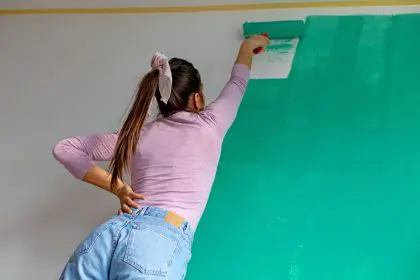Have you ever wondered how to keep your home warm in the winter and cool in the summer? One simple and effective way to do this is to use drapes and curtains. Drapes and curtains can help insulate your home by blocking out drafts and preventing heat from escaping. They can also help reduce your energy bills, which can save you a significant amount of money over time.
In this article, we will discuss the benefits of using drapes and curtains for insulation, as well as how to choose the right drapes and curtains for your home. We will also provide some tips on how to hang and maintain your drapes and curtains for optimal performance.
Benefits of using drapes and curtains for insulation:
There are many benefits to using drapes and curtains for insulation, including:
- Reduced energy bills: Drapes and curtains can help reduce your energy bills by blocking out drafts and preventing heat from escaping. This means that you will use less energy to heat and cool your home, which can save you a significant amount of money over time.
- Improved comfort: Drapes and curtains can help make your home more comfortable by keeping it warm in the winter and cool in the summer. This is especially important if you live in a climate with extreme temperatures.
- Reduced noise pollution: Drapes and curtains can also help reduce noise pollution from outside. This can be especially beneficial if you live in a noisy area or near a busy road.
- Enhanced privacy: Drapes and curtains can also help enhance your privacy by blocking out the view from outside. This can be especially important if you have windows that face directly into your neighbor’s yard.
How to choose the right drapes and curtains for insulation:
When choosing drapes and curtains for insulation, there are a few things you should keep in mind:
- Fabric: The fabric of your drapes and curtains will have a big impact on their insulating properties. Look for fabrics that are thick and dense, such as velvet, chenille, or blackout fabric.
- Color: Darker colored drapes and curtains tend to absorb more heat than lighter colored drapes and curtains. This can be beneficial if you live in a cold climate. However, if you live in a hot climate, you may want to choose lighter colored drapes and curtains to reflect heat away from your home.
- Length: Drapes and curtains that reach all the way to the floor will provide the best insulation. However, if you have pets or children, you may want to choose shorter drapes or curtains to avoid tripping hazards.
How to hang and maintain your drapes and curtains for optimal performance:
To get the best insulation performance from your drapes and curtains, it is important to hang them properly. Make sure that your drapes and curtains are wide enough to cover the entire window frame. You should also hang your drapes and curtains close to the wall to minimize drafts.
To maintain your drapes and curtains, be sure to clean them regularly. You can clean most drapes and curtains in the washing machine on a gentle cycle. However, be sure to check the care label first.
Tips for saving money on drapes and curtains:
Drapes and curtains can be expensive, but there are a few things you can do to save money:
- Shop for sales: Many retailers offer sales on drapes and curtains throughout the year. Be sure to check the sale section before you buy.
- Consider buying used drapes and curtains: You can often find used drapes and curtains in good condition at thrift stores or garage sales.
- Make your own drapes and curtains: If you are handy with a sewing machine, you can make your own drapes and curtains. This can be a great way to save money and get the exact look you want.
Drapes and curtains are a simple and effective way to insulate your home and save money on your energy bills. When choosing drapes and curtains for insulation, look for fabrics that are thick and dense, such as velvet, chenille, or blackout fabric. You should also choose drapes and curtains that are long enough to reach the floor and that can be hung close to the wall. To maintain your drapes and curtains, be sure to clean them regularly.
By following these tips, you can choose and use drapes and curtains to insulate your home and save money on your energy bills.
This story was created using AI technology.














